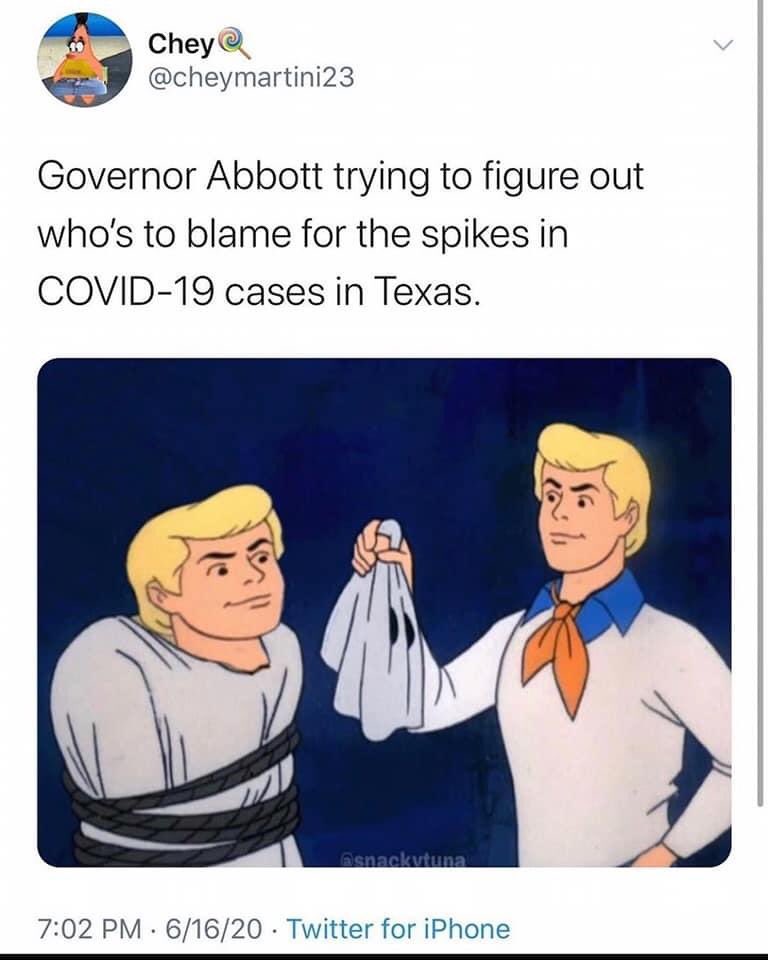As dominating as Gov. Greg Abbott’s GOP primary victory on Tuesday looked at first blush, a closer look at the results shows a nagging problem within his own party that could ultimately cost him in his race against Democratic nominee Beto O’Rourke.
Although two-thirds of the Republican Party voters statewide backed Abbott for a record-tying third term as governor, some of the most important GOP counties in Texas signaled the continuation of a mini-revolt against him.
In fast-growing Montgomery County, Abbott won 56 percent of the vote. That’s a strong number in most counties, but in rock-solid red Montgomery it’s eyebrow raising. No county was more important for former President Donald Trump in Texas in 2020 than Montgomery. He won 71 percent of the vote there — the biggest win of any county with at least 100,000 voters in Texas.
And in Collin County, a GOP suburban stronghold north of Dallas with a strong tea party contingent, Abbott hit 60 percent. Again good, but well behind the 70 to 80 percent he won in places like Bexar, Cameron on the border and Potter County in the Panhandle.
The results hint at a problem other Republicans have been talking about for months. Texas Agriculture Commissioner Sid Miller said there is a contingent of voters within the Republican Party who are very angry with Abbott over the way he handled the pandemic and who might just skip the race.
“There’s no way they’ll ever vote for Beto, but they aren’t going to vote for Abbott,” Miller said.
[…]
But in past races, Abbott, an attorney and former judge originally from Wichita Falls, hasn’t had any trouble with the Republican base. In his races for attorney general and governor since 2002, Abbott never had serious primary opponents. This year he drew two of them in Huffines and former Texas Republican Party chairman Allen West. Huffines spent more than $15 million and West $2 million in their bids to challenge Abbott.
Both got in the race last year, citing Abbott’s handling of the pandemic. Abbott easily weathered the attacks, winning 66 percent of the Republican Primary vote.
Still, public polling shows the problem Abbott has with the GOP base. In the latest Texas Politics Project poll from the University of Texas, 74 percent of Republicans approved of the job Abbott has done as governor. While high, it is more than 10 percentage points lower than where Abbott was two years ago just before the pandemic hit. At times, Abbott had an 89 percent job approval rating from Republicans before the pandemic, according to past University of Texas polls.
As with the Beto comparison post, here are the counties with at least a thousand votes being cast where Abbott, who got over 66% of the vote overall, got less than sixty percent.
County Abbott Huffines West Abbt% Huff% West%
============================================================
Ochiltree 502 169 261 47.18% 15.88% 24.62%
Caldwell 2,384 312 174 50.74% 6.64% 8.00%
Brewster 678 54 446 50.75% 4.04% 33.38%
Mitchell 594 103 190 53.13% 9.21% 16.99%
Montgomery 40,112 16,057 9,185 56.14% 22.47% 12.85%
Kerr 5,368 1,294 1,928 56.90% 13.72% 20.44%
Gillespie 3,758 547 1,486 58.33% 8.49% 23.06%
Brazoria 17,922 4,984 4,076 58.68% 16.32% 13.35%
Wise 5,857 1,304 1,696 58.73% 13.08% 17.01%
Waller 2,803 822 591 58.94% 17.28% 12.43%
Hansford 727 84 218 59.15% 6.83% 17.74%
Collin 47,434 13,088 11,616 59.72% 16.48% 14.62%
In Caldwell County, The Other Rick Perry got 1,400 votes, good for a mind-boggling 29.80% of the total. He also got 12.12% of the vote in Starr County, though that represented only 132 votes cast. Nowhere else did he come anywhere close to that. If anyone can come up with a good guess as to what the heck was going on in Caldwell County, please let me know.
There’s not a whole lot these counties have in common. They’re all around the state. Most are indeed quite red, but Brewster (a border county on the western end of the state, home of Alpine where longtime Democratic State Rep. Pete Gallego was from) was carried by Beto in 2018 with 52.5% of the vote; Trump carried it in 2020 with 51.0%. Collin and Brazoria are suburban counties that are red today but trending Democratic, Caldwell is smaller and more exurban than suburban – east of Hays and Comal, south of Travis – but it too has moved slightly left over the past decade. Montgomery is of course the red king of Texas, in terms of size and growth and Republican share of the vote, while Kerr is a western hill country place about a third of the size of Montgomery’s little brother Comal and just as red. The rest are a deep shade of crimson.
Is any of this a real threat to Abbott? I feel like this is a funhouse mirror reflection of the “Beto in Latino counties” discourse from four years ago. It’s enough to inspire some questions, but unless the likes of Allen West and Don Huffines are actively campaigning against Abbott this fall, I don’t think it will matter much, if at all. Maybe some of the truly deplorable contingent stays home, or skips the Governor’s race out of spite. I’ll be delighted if that happens, but I won’t be holding my breath. If Beto’s going to win, it’s going to be one part generating the kind of wave we got in 2018, one part getting some crossovers because of an issue like marijuana legalization or the freeze, and maybe one part some Republican fatigue or frustration with Abbott. Like I said, I’ll be more than happy to see Abbott underperform in any or all of these counties. I’m just not betting the election on it.

